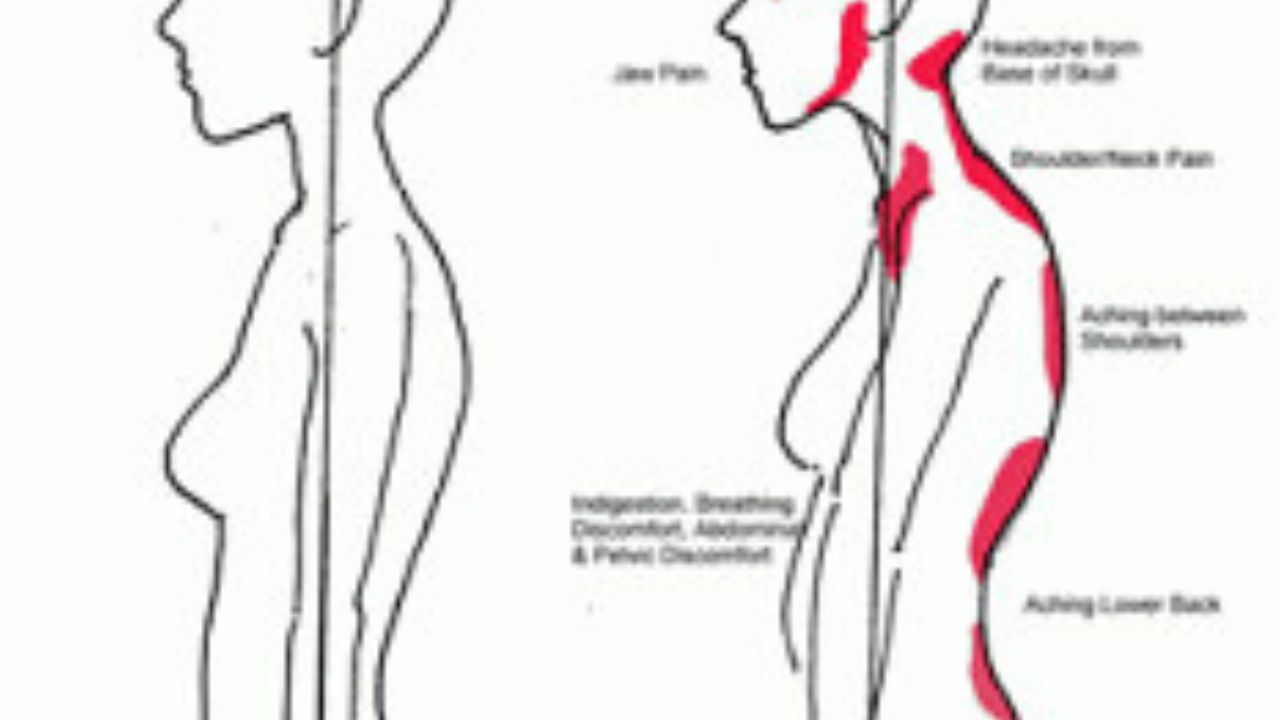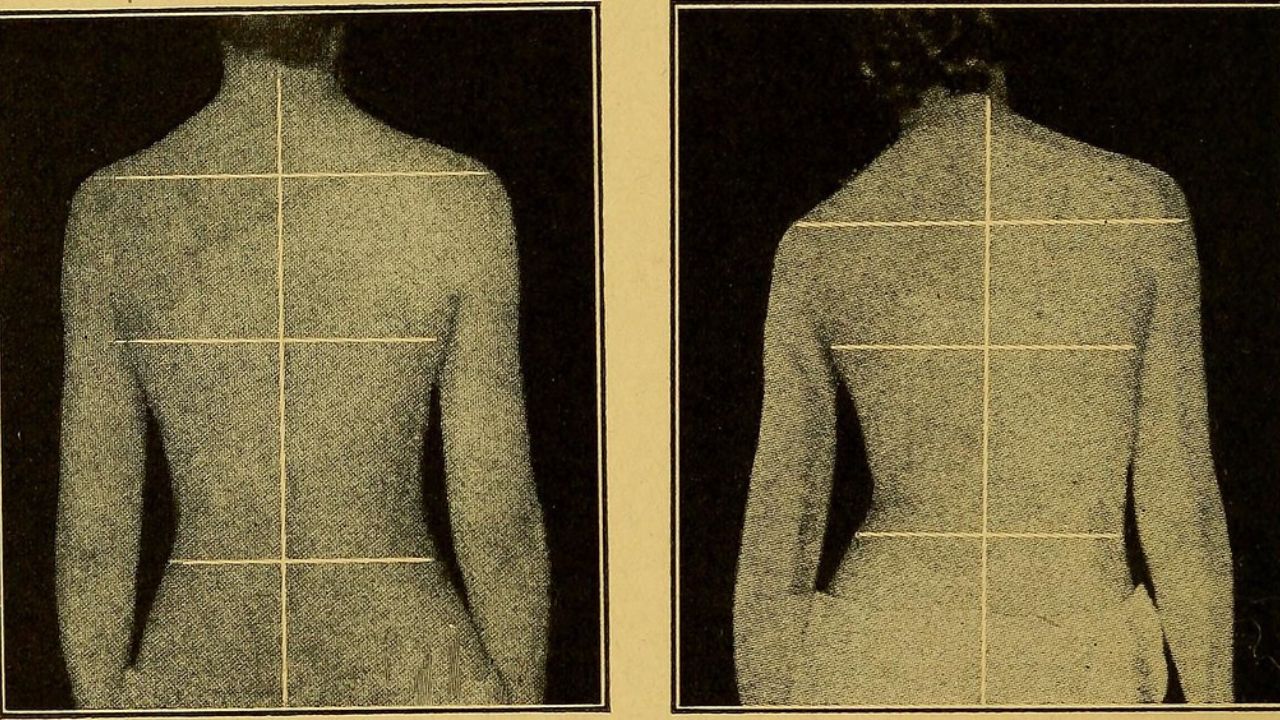
In today's increasingly sedentary world, maintaining good posture has become essential for overall health and well-being. Poor posture can lead to a variety of musculoskeletal issues, including back pain and reduced mobility.
This article aims to provide valuable insights and practical tips on how to achieve and maintain an upright posture. From assessing your current posture to incorporating specific exercises into your daily routine, these top 10 tactics will help you strike the right balance and enjoy the benefits of a strong and healthy spine.
Assessing Your Current Posture
When evaluating your posture, it is crucial to perform a thorough self-assessment to identify any potential areas of improvement. Assessing your posture involves examining the alignment of your spine, the position of your shoulders, and the curvature of your neck.
Start by standing in front of a mirror and observing your body from different angles. Pay attention to any imbalances, such as slouching or uneven shoulders. Take note of any pain or discomfort you may feel in certain areas.
Once you have assessed your posture, you can then focus on improving it. This can be done through exercises that strengthen the core muscles, stretching to increase flexibility, and making conscious adjustments to your daily habits, such as sitting with proper ergonomics and avoiding prolonged periods of sitting or standing.
Strengthening Your Core Muscles
Strengthening your core muscles is a crucial aspect of maintaining an upright posture. A strong core provides stability and support to your spine, helping to prevent slouching and improper alignment.
Effective exercises for core strength include planks, sit-ups, and yoga poses such as boat pose or plank pose.

Developing a strong core not only improves your posture but also enhances your overall strength, balance, and stability.
Importance of Core Strength
Developing strong core muscles is crucial for maintaining proper posture and preventing lower back pain. Your core muscles, which include the muscles in your abdomen, back, and pelvis, provide stability and support to your spine.
Here are three reasons why strengthening your core is important:
Core stability: A strong core helps stabilize your entire body, allowing you to move efficiently and maintain balance. It improves your body's ability to resist external forces and reduces the risk of injury during physical activities.
Posture correction: Weak core muscles can lead to poor posture, causing your spine to curve unnaturally and resulting in back pain. Strengthening your core helps align your spine and maintain a neutral posture, reducing strain on your back muscles.
Lower back pain prevention: A strong core supports your lower back and helps distribute the load evenly, reducing the stress on your spine. This can alleviate lower back pain and prevent future injuries.
Effective Exercises for Core
To effectively strengthen your core muscles, incorporate a variety of exercises that target different areas and engage multiple muscle groups. Core stability is vital for maintaining good posture and overall body strength.

One of the most effective exercises for core strengthening is the plank. Plank variations, such as side planks and reverse planks, can help target different areas of the core, including the obliques and lower back. These exercises engage not only the abdominal muscles but also the back, hips, and glutes.
Benefits of Strong Core
A strong core provides numerous benefits for individuals, including improved posture, enhanced stability, and increased overall body strength. Strengthening your core muscles through exercises like Pilates and yoga can have a significant impact on your daily life. Here are some of the key benefits of developing a strong core:
Improved posture: A strong core helps to align your spine, preventing slouching or hunching. This not only improves your appearance but also reduces the risk of back pain and discomfort.
Enhanced stability: A strong core provides a solid foundation for all movements, whether it's walking, running, or lifting heavy objects. It improves your balance and coordination, reducing the risk of falls or injuries.
Increased overall body strength: Your core muscles are involved in almost every movement you make. Strengthening them not only improves your core strength but also enhances the strength and power of your entire body.
Practicing Proper Sitting Techniques
When it comes to maintaining an upright posture, practicing proper sitting techniques is crucial. One important aspect of this is chair ergonomics, which involves adjusting your chair to support your body's natural alignment.
Additionally, engaging in active sitting, such as using a stability ball or a kneeling chair, can provide numerous benefits, such as improved core strength and increased calorie burn.

Chair Ergonomics Importance
Promoting good posture and minimizing discomfort, practicing proper sitting techniques is crucial for individuals who spend long hours seated in chairs. Chair ergonomics play a significant role in maintaining a healthy posture and preventing musculoskeletal issues.
Here are some important points to consider when it comes to chair ergonomics:
- Adjustable chairs: Invest in chairs that allow you to adjust the height, backrest, and armrests to suit your body's needs.
- Lumbar support: Look for chairs with built-in lumbar support or use a cushion to maintain the natural curve of your lower back.
- Seat depth and width: Ensure that the chair's seat depth and width provide enough room to sit comfortably without restricting movement.
- Posture exercises: Incorporate regular stretching and strengthening exercises into your routine to improve posture and alleviate muscle tension.
Active Sitting Benefits
By incorporating active sitting techniques into daily routines, individuals can enhance their posture and reduce the risk of musculoskeletal issues. Active sitting benefits not only include improved posture but also increased core strength, improved balance, and better overall spinal health.
Active sitting involves using chairs that promote movement and engage the muscles while sitting. These chairs, designed with proper chair ergonomics in mind, encourage individuals to maintain an upright posture and engage their core muscles to maintain stability.
By sitting on an active chair, individuals can avoid the negative effects of prolonged sitting, such as back pain and poor posture. Additionally, active sitting can increase blood flow and oxygenation to the muscles, leading to improved productivity and focus.
Incorporating active sitting techniques can greatly benefit individuals who spend a significant amount of time sitting, such as office workers or students.
Utilizing Ergonomic Furniture and Equipment
One essential tactic for maintaining an upright posture is to incorporate at least three pieces of ergonomic furniture and equipment into your workspace. These specialized tools are designed to promote proper alignment and reduce strain on your body, ultimately enhancing your overall comfort and productivity.

When it comes to ergonomic furniture and equipment, there are several options that can greatly benefit your posture and well-being:
Ergonomic Keyboard: This keyboard is designed with a split layout and adjustable angles to support a more natural hand and wrist position, reducing the risk of developing repetitive strain injuries.
Standing Desk: By allowing you to alternate between sitting and standing throughout the day, a standing desk promotes better posture, engages your muscles, and improves overall blood circulation.
Ergonomic Chair: A well-designed ergonomic chair provides proper lumbar support, adjustable height and armrests, and a comfortable seat cushion, ensuring optimal spinal alignment and reducing the risk of back pain.
Stretching and Mobilizing Your Spine
Maintaining spinal mobility is crucial for overall posture and musculoskeletal health. By incorporating effective stretching techniques into your daily routine, you can improve the flexibility and range of motion in your spine.
Consistently practicing these stretches and maintaining good posture throughout the day can help prevent common issues such as back pain and stiffness.
Importance of Spinal Mobility
Regular stretching and mobilization of the spine is crucial for maintaining a healthy and flexible back. Spinal health is essential for overall well-being, as it supports proper posture, prevents injuries, and promotes freedom of movement. Incorporating flexibility exercises into your daily routine can help improve spinal mobility and alleviate stiffness and discomfort.

Here are three key reasons why spinal mobility is important:
Prevents muscle imbalances: Stretching and mobilizing the spine helps to maintain proper alignment and balance between the muscles and ligaments that support the back. This reduces the risk of muscle imbalances that can lead to pain and postural issues.
Enhances range of motion: Regular spine mobility exercises increase the flexibility of the spinal joints, allowing for a wider range of motion. This enables you to move freely and perform daily activities with ease.
Supports a healthy nervous system: The spine houses and protects the spinal cord, which is a crucial component of the nervous system. Maintaining spinal mobility ensures that the nerves can function optimally, transmitting signals efficiently throughout the body.
Effective Stretching Techniques
To effectively stretch and mobilize your spine, it is important to incorporate a variety of techniques that target different areas of the back. Standing stretches are a great way to improve spinal mobility and relieve tension.
One effective standing stretch is the overhead reach. Stand with your feet hip-width apart, raise your arms overhead, and reach towards the ceiling, lengthening your spine.
Another standing stretch is the side bend. Stand with your feet hip-width apart, place one hand on your hip, and reach the other arm overhead, bending sideways towards the opposite direction. These stretches help to elongate the spine and improve flexibility.

In addition to standing stretches, desk exercises can also be incorporated into your daily routine to promote spinal mobility. One example is the seated twist. Sit upright in your chair, place one hand on the backrest, and twist your torso towards the opposite side, using your hand to gently guide the twist.
Another desk exercise is the seated forward fold. Sit at the edge of your chair, hinge at the hips, and slowly lower your torso towards your thighs, allowing your spine to stretch and lengthen.
Incorporating a combination of standing stretches and desk exercises into your daily routine can help to improve spinal mobility and maintain an upright posture. These techniques, when done regularly, can relieve tension and promote freedom of movement in your back.
Daily Posture Maintenance
Incorporating a consistent routine of spinal stretches and mobilization exercises into your daily regimen is essential for maintaining optimal posture and spinal health. Daily stretching helps to improve flexibility, increase range of motion, and relieve muscle tension, all of which contribute to a better alignment of the spine.
By incorporating these stretches into your daily routine, you can promote proper posture awareness and prevent the development of postural imbalances. Here are three key stretches to include in your daily routine:
Cat-Cow Stretch: This stretch involves arching and rounding your back, which helps to mobilize the spine and improve flexibility.
Child's Pose: This stretch lengthens and decompresses the spine, promoting relaxation and relieving tension in the back.

Spinal Twist: This stretch involves twisting the spine, which helps to release tension and improve spinal mobility.
Maintaining Proper Alignment While Standing
The individual's proper alignment while standing is crucial for maintaining a healthy and upright posture. Assessing alignment is the first step towards achieving this goal.
To assess alignment, one should start by standing against a wall with the back of the head, shoulder blades, and buttocks touching the wall. The heels should be around two inches away from the wall.
Proper standing techniques involve distributing body weight evenly on both feet, with the knees slightly bent and aligned over the ankles. The pelvis should be neutral, not tilted forward or backward.
Engaging the core muscles and lengthening the spine are also important factors in maintaining proper alignment while standing.
Incorporating Posture Exercises Into Your Daily Routine
As individuals strive to maintain an upright posture, it is essential to incorporate posture exercises into their daily routine in order to strengthen the muscles that support proper alignment. Posture exercises not only help to improve posture but also prevent muscle imbalances and alleviate back pain.
Here are three effective stretching techniques that can be incorporated into the daily routine:

Upper Back Stretch: Stand up straight with your feet shoulder-width apart. Interlace your fingers in front of you and round your upper back while pushing your hands away from your body. Hold this position for 30 seconds and repeat three times.
Chest Opener: Stand tall with your arms by your sides. Extend your arms out to the sides at shoulder height and gently squeeze your shoulder blades together. Hold for 15 seconds and repeat three times.
Hip Flexor Stretch: Stand in a lunge position with your right foot forward and your left foot back. Bend your right knee and keep your left leg straight. Lean forward slightly and feel the stretch in the front of your left hip. Hold for 30 seconds on each side and repeat twice.
Incorporating these posture exercises into your daily routine will not only improve your posture but also contribute to a healthier and more balanced body.
Using Posture Correcting Tools and Devices
Posture correcting tools and devices can be valuable aids in maintaining proper alignment and preventing postural imbalances. These devices provide support and promote muscle activation, helping individuals achieve and maintain an upright posture. Posture correcting techniques, such as using posture braces or posture correctors, can be especially helpful for those who spend long hours sitting or performing repetitive tasks.
One of the benefits of using these devices is that they provide a gentle reminder to maintain correct posture throughout the day. They help to retrain the muscles and encourage proper alignment, reducing the risk of developing postural imbalances or chronic pain. Additionally, they can alleviate strain on the neck, shoulders, and back, improving overall comfort and reducing the likelihood of developing posture-related conditions.
When choosing a posture correcting tool or device, it is important to consult with a healthcare professional or posture specialist to ensure proper fit and usage. These devices should be used in conjunction with other posture correcting techniques, such as regular exercise and ergonomic adjustments, for optimal results.

Creating a Posture-Friendly Workspace
Arranging the desk and chair ergonomically is essential for promoting a posture-friendly workspace. Here are some tips to help you create an environment that supports good posture:
- Invest in a comfortable chair that offers proper lumbar support and adjustable height.
- Position your computer monitor at eye level to avoid straining your neck and shoulders.
- Use a keyboard and mouse that allow your arms to rest comfortably and keep your wrists in a neutral position.
Creating a posture-friendly workspace has several benefits. Good posture not only helps prevent back and neck pain, but it also improves breathing, digestion, and circulation. Additionally, maintaining proper posture can boost productivity and overall well-being.
To enhance your workspace further, consider incorporating posture-friendly accessories such as ergonomic footrests, standing desks, or lumbar support cushions.
Seeking Professional Help and Guidance
Engaging in regular chiropractic consultations and physiotherapy sessions can greatly assist in improving and maintaining proper posture. Seeking professional assistance is essential for individuals who are serious about correcting their posture. Chiropractors and physiotherapists are trained experts who can provide specialized guidance and techniques to address specific posture issues.
During a chiropractic consultation, the chiropractor will assess your spinal alignment and identify any misalignments or imbalances that may be contributing to poor posture. They will then develop a personalized treatment plan that may include spinal adjustments, exercises, and stretches to correct these issues.
Physiotherapy sessions focus on strengthening and stretching the muscles that support good posture. A physiotherapist will guide you through targeted exercises and stretches to improve muscle balance and flexibility, helping you maintain proper alignment.
Professional assistance is invaluable in understanding the root causes of poor posture and obtaining effective posture correction techniques. By seeking guidance from chiropractors and physiotherapists, you can receive personalized care and support to achieve and maintain an upright posture.

Frequently Asked Questions
Will Practicing Proper Sitting Techniques Help Improve My Posture?
Practicing proper sitting techniques can indeed improve posture. By maintaining an upright position, you can experience numerous benefits, such as reduced back and neck pain, improved breathing and digestion, and increased confidence and productivity.
Can Using Ergonomic Furniture and Equipment Really Make a Difference in Maintaining an Upright Posture?
Using ergonomic furniture and equipment, such as an ergonomic chair, can significantly contribute to maintaining an upright posture. These tools provide proper support and alignment, reducing strain on the body. Additionally, posture correctors can further enhance posture effectiveness.
What Are Some Effective Exercises to Stretch and Mobilize My Spine?
To improve spine flexibility and maintain spinal alignment, incorporating exercises that stretch and mobilize the spine is essential. These exercises can include cat-cow pose, child's pose, and spinal twists, which help release tension and promote a healthy posture.
How Can I Incorporate Posture Exercises Into My Daily Routine?
Incorporating posture exercises into your daily routine is essential for maintaining an upright posture. It not only improves your overall alignment and reduces the risk of musculoskeletal issues, but also enhances your confidence and productivity. Consistency is key, so consider setting reminders and finding enjoyable exercises to stay motivated.
Are Posture Correcting Tools and Devices Effective in Improving Posture?
Posture braces and devices can be effective in improving posture by providing support and reminding individuals to maintain proper alignment. Yoga for posture can also help improve alignment through strengthening and stretching exercises.
 Mobility trainingHome Fitness RecoverySports Injury PreventionPersonal Physical TherapyOrthopedic SolutionsPrivacy PolicyTerms And Conditions
Mobility trainingHome Fitness RecoverySports Injury PreventionPersonal Physical TherapyOrthopedic SolutionsPrivacy PolicyTerms And Conditions
